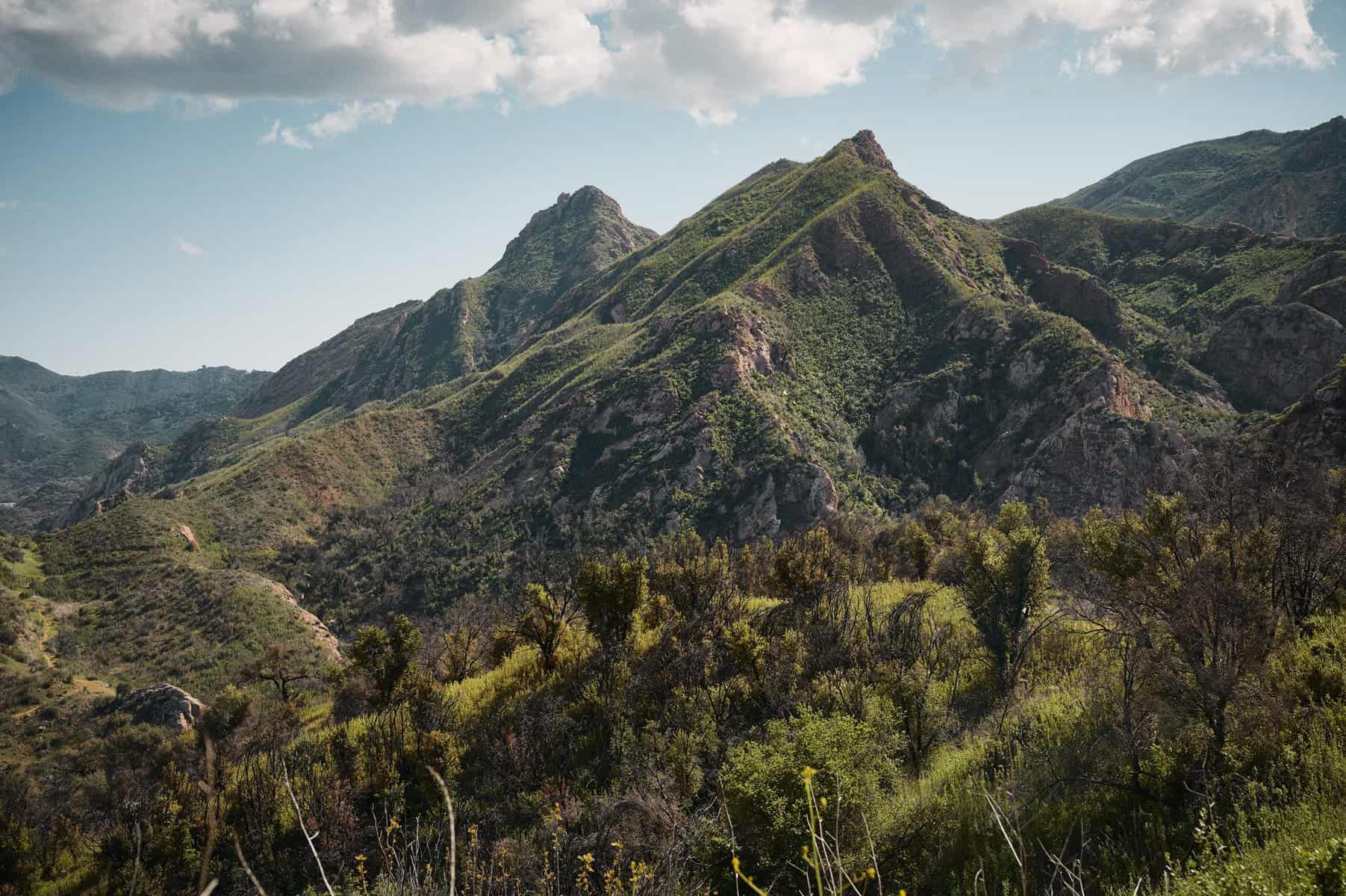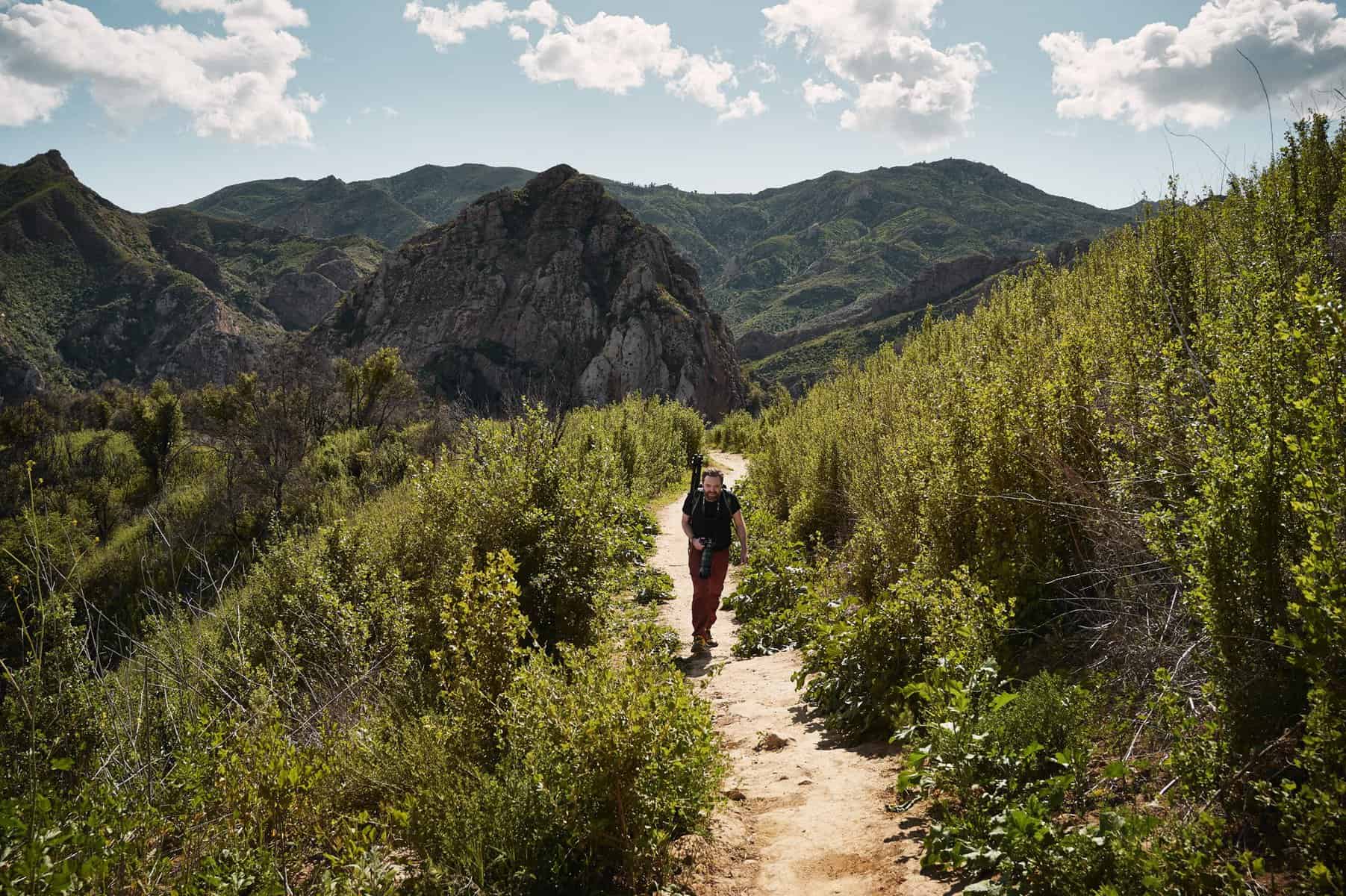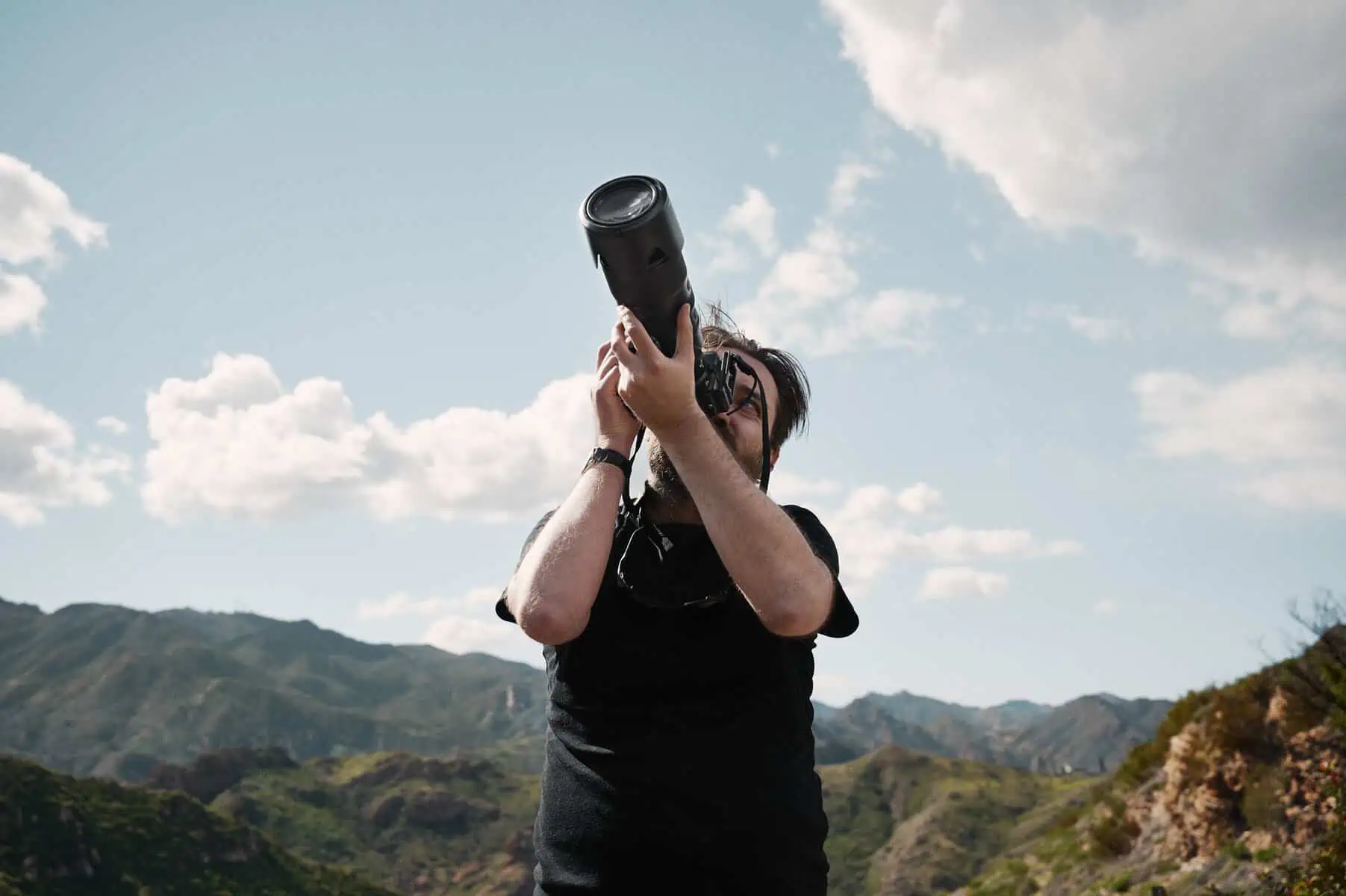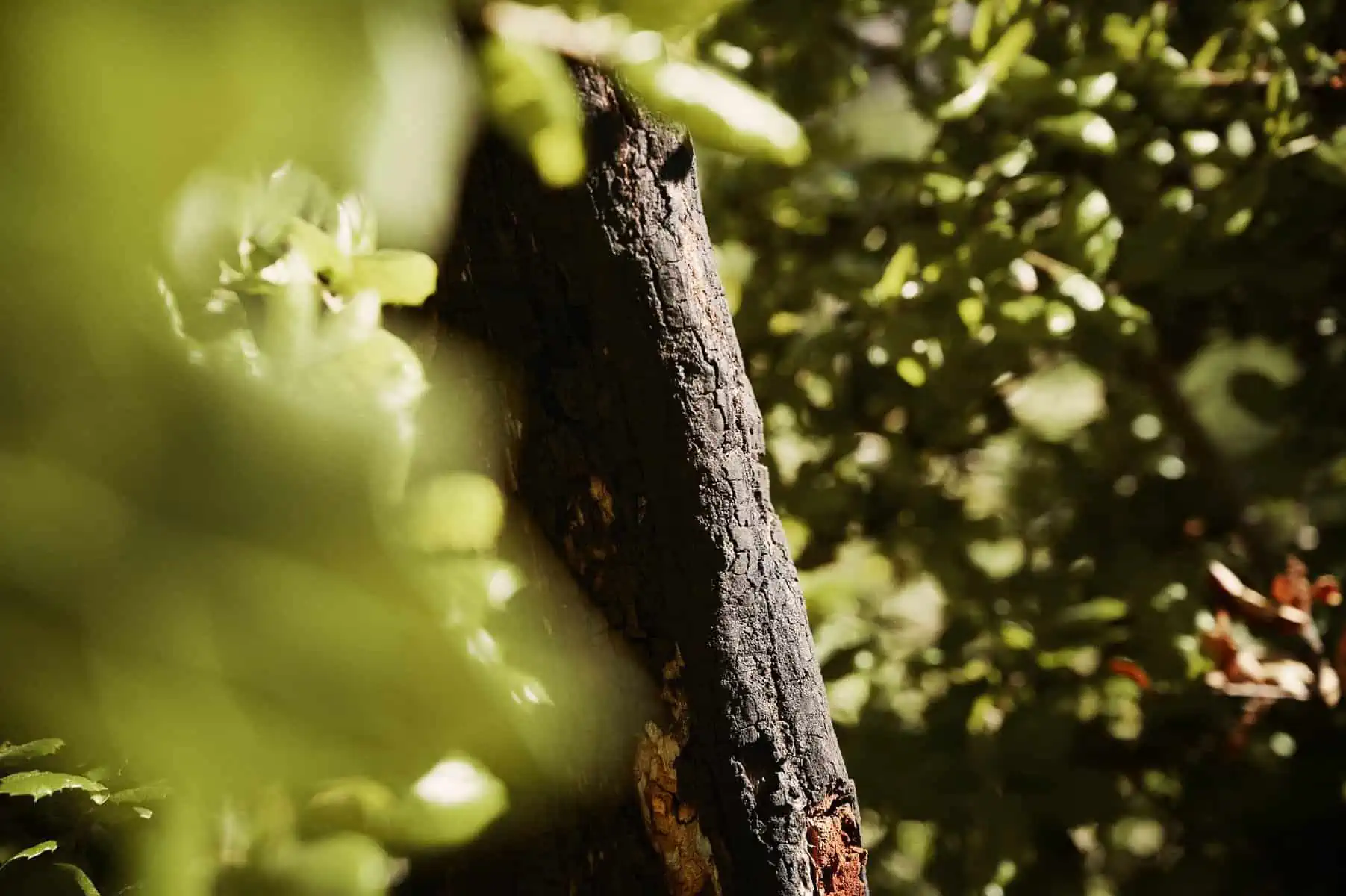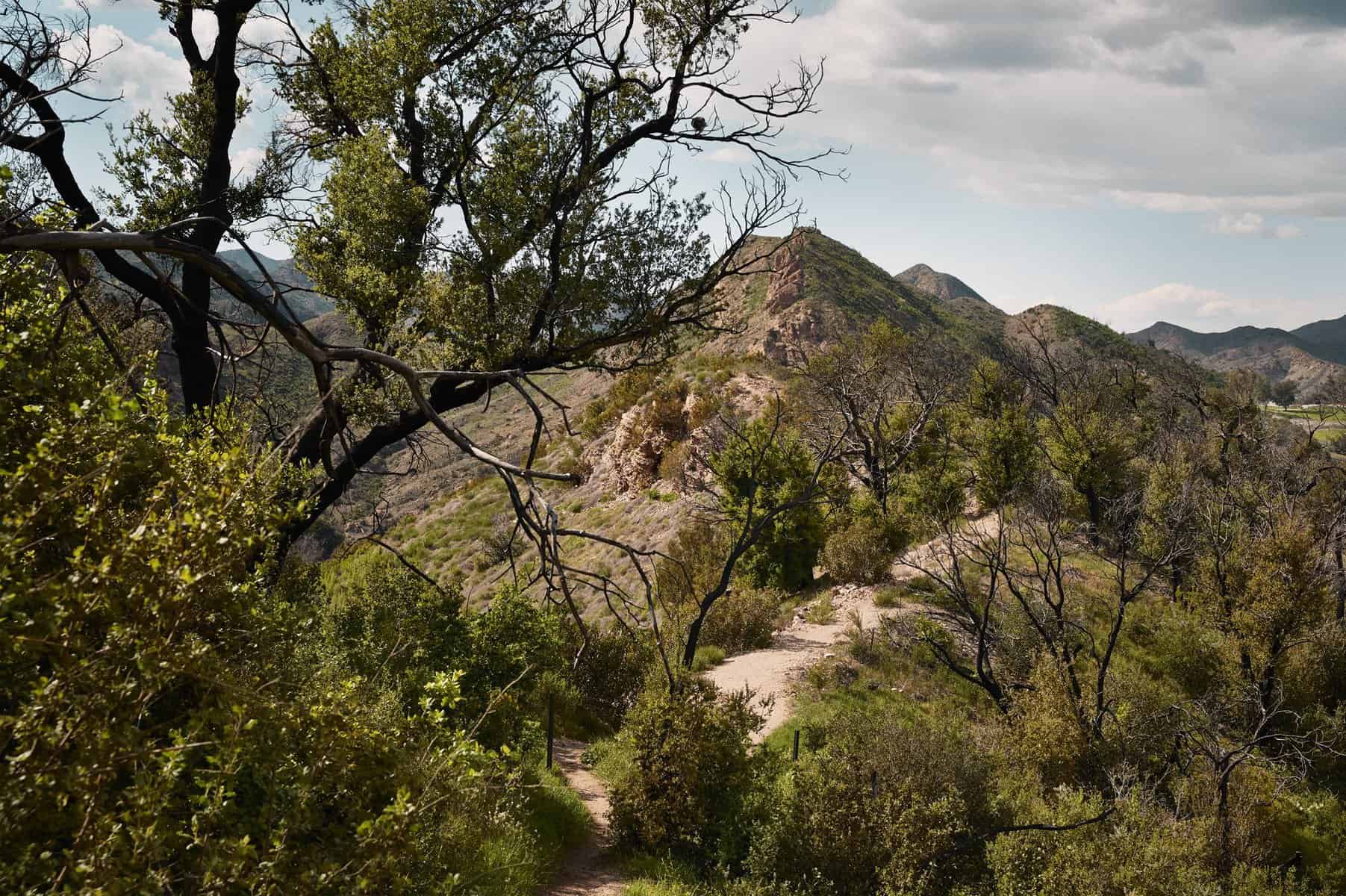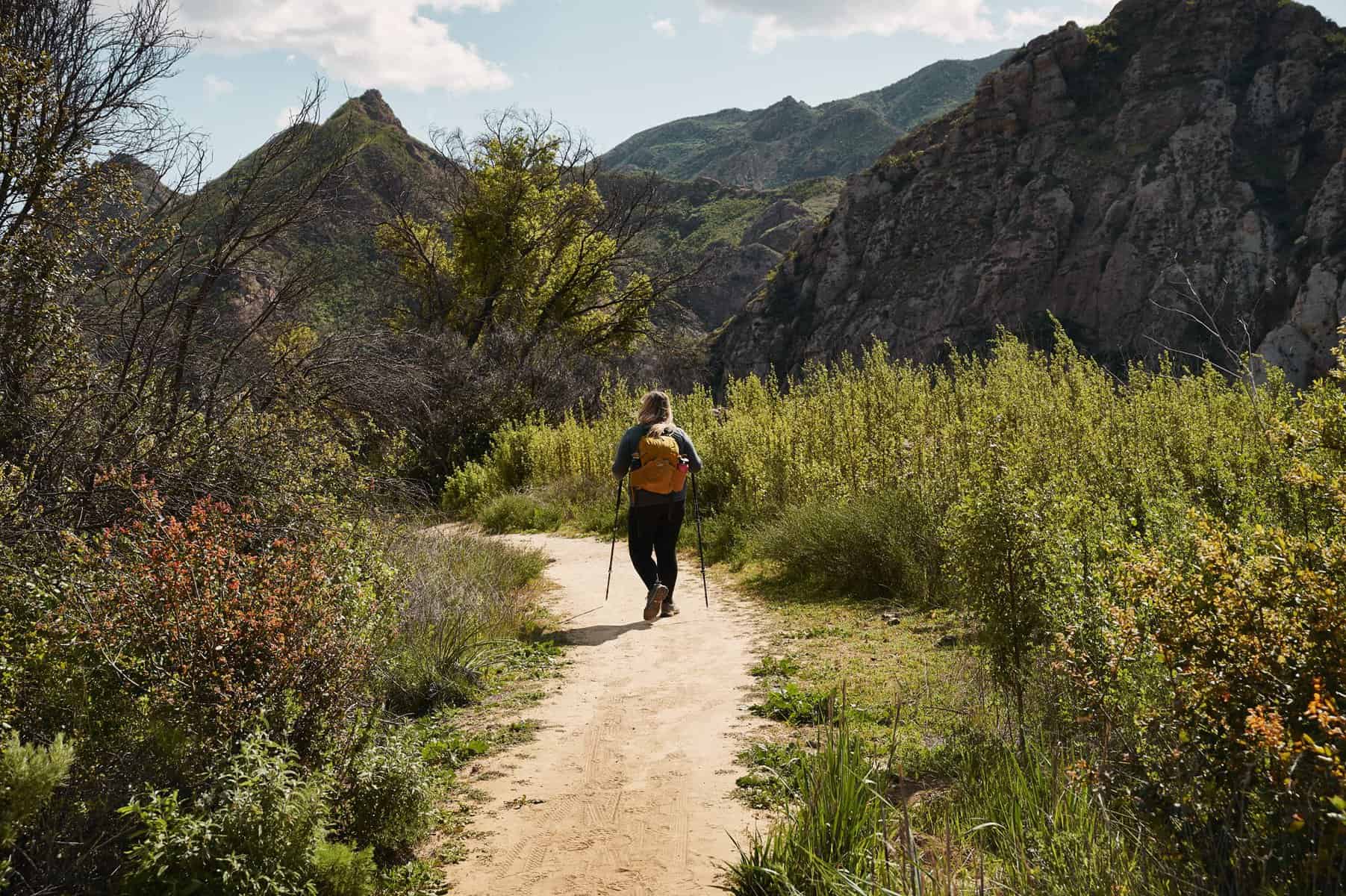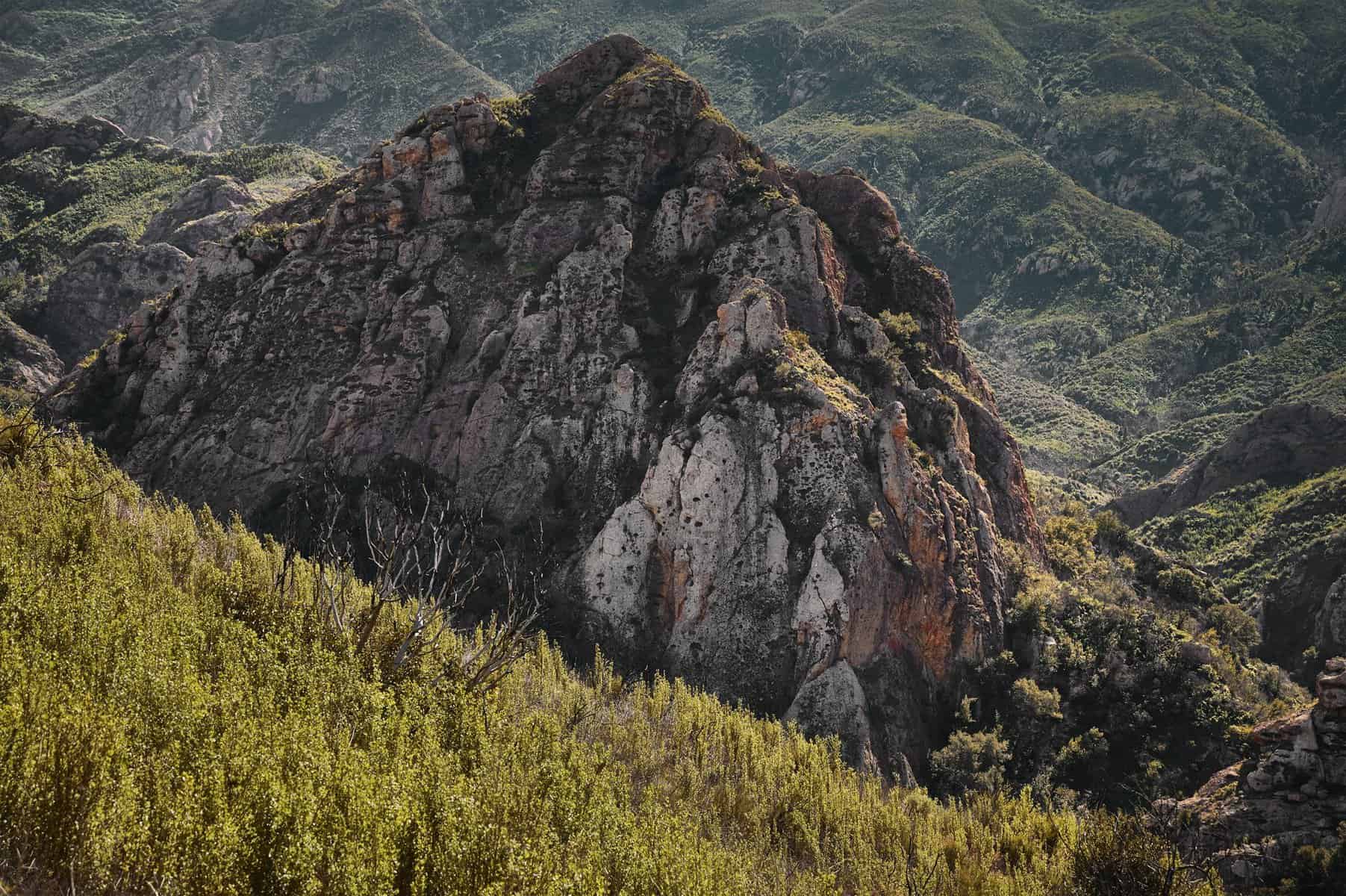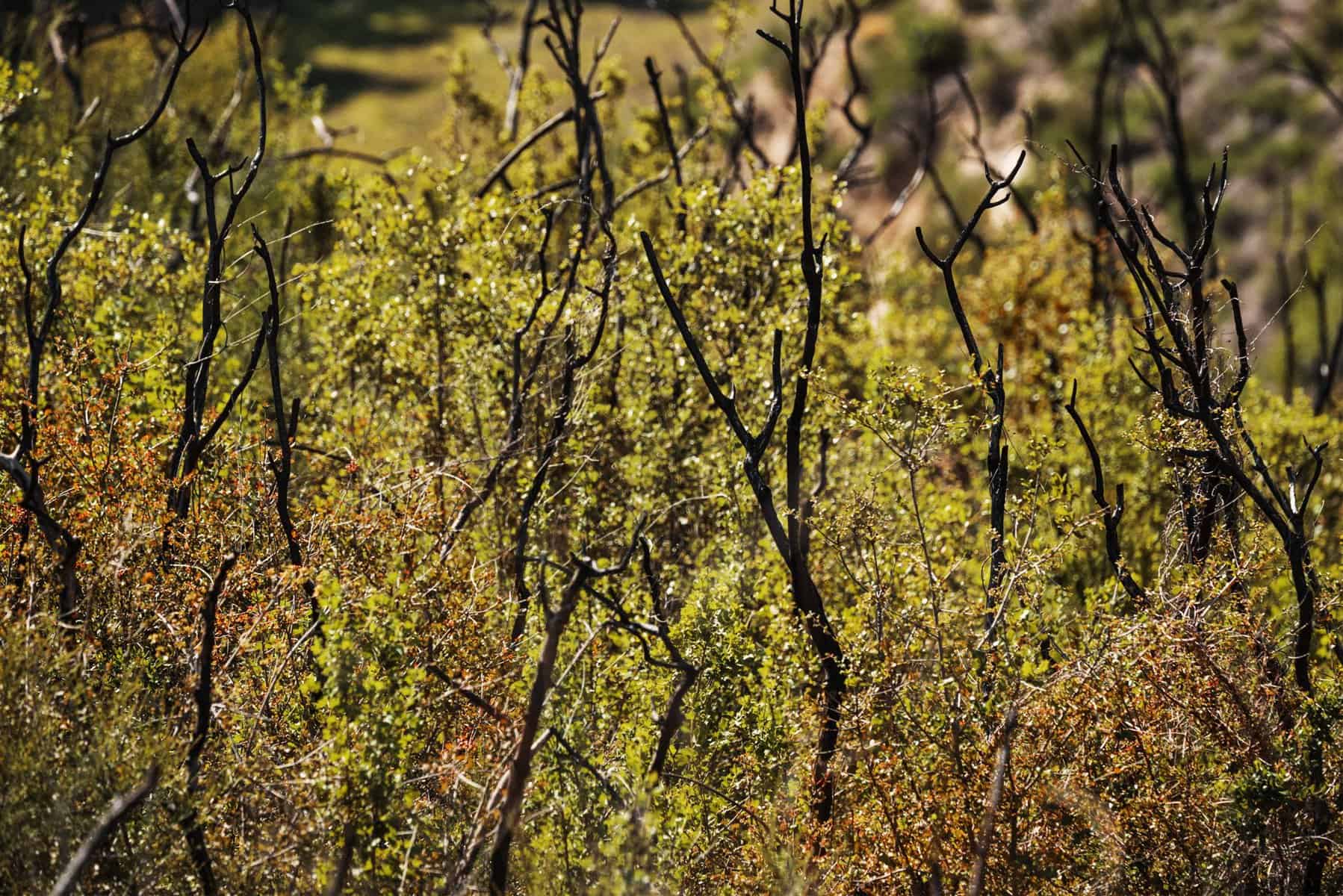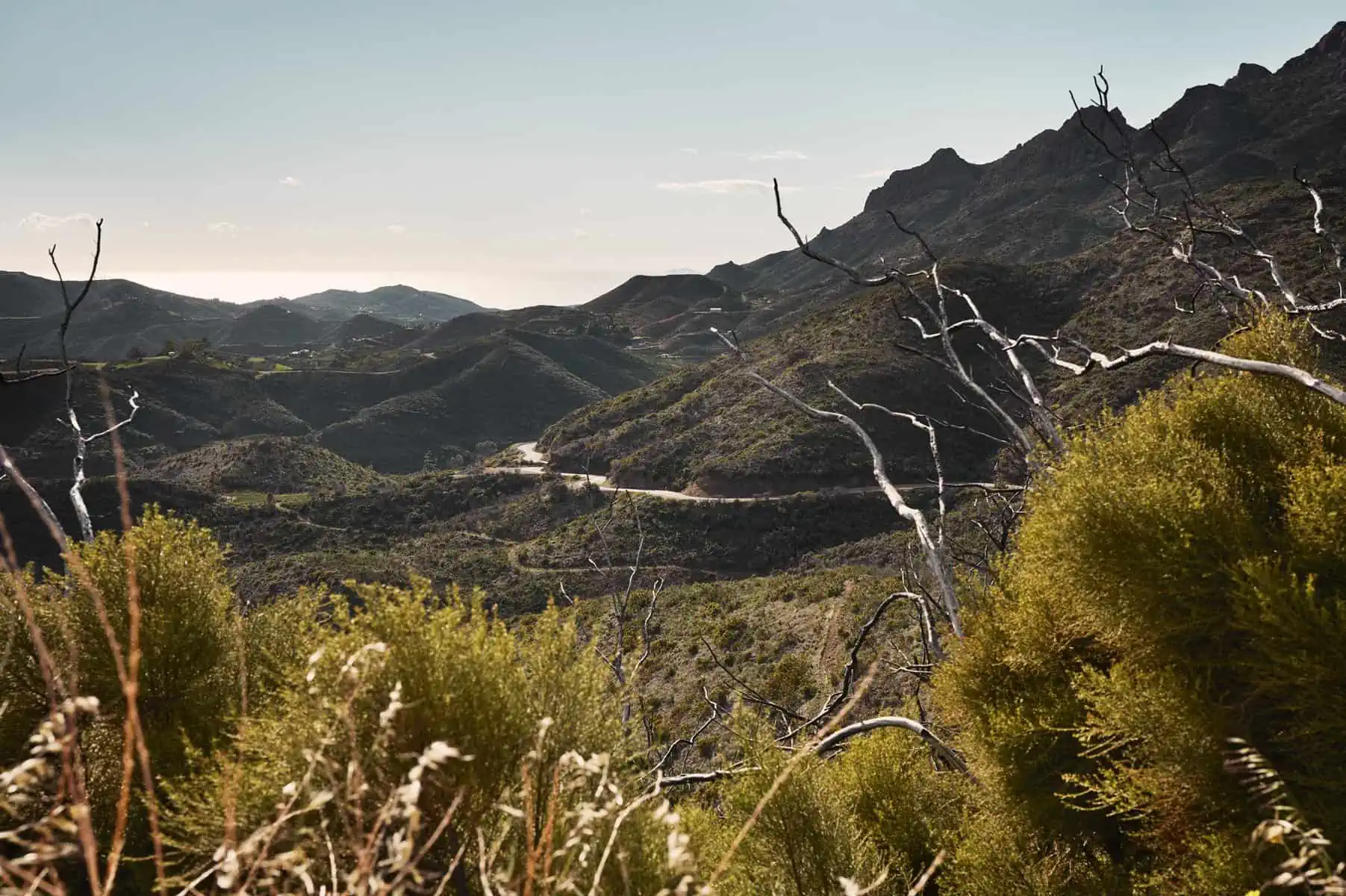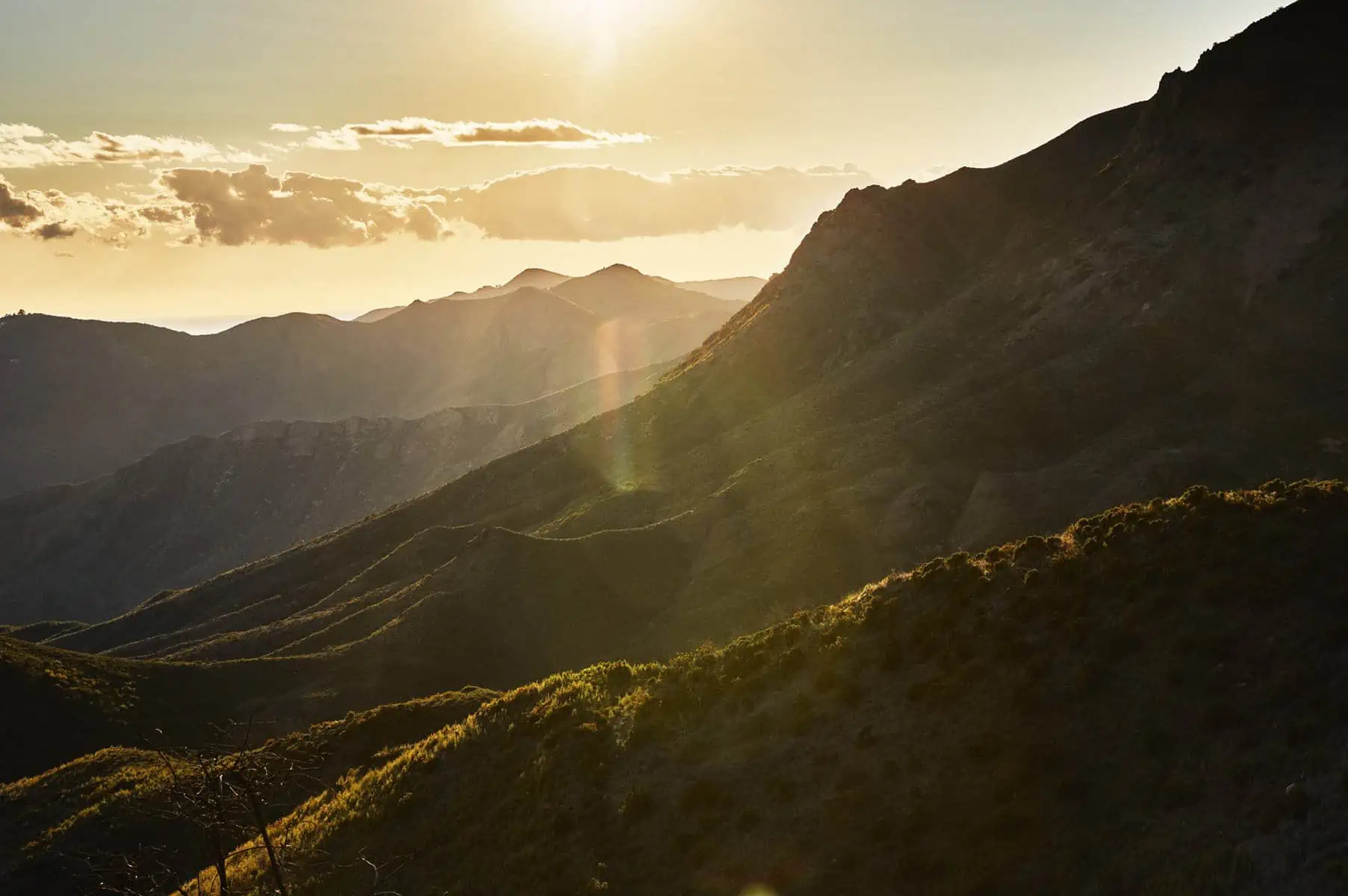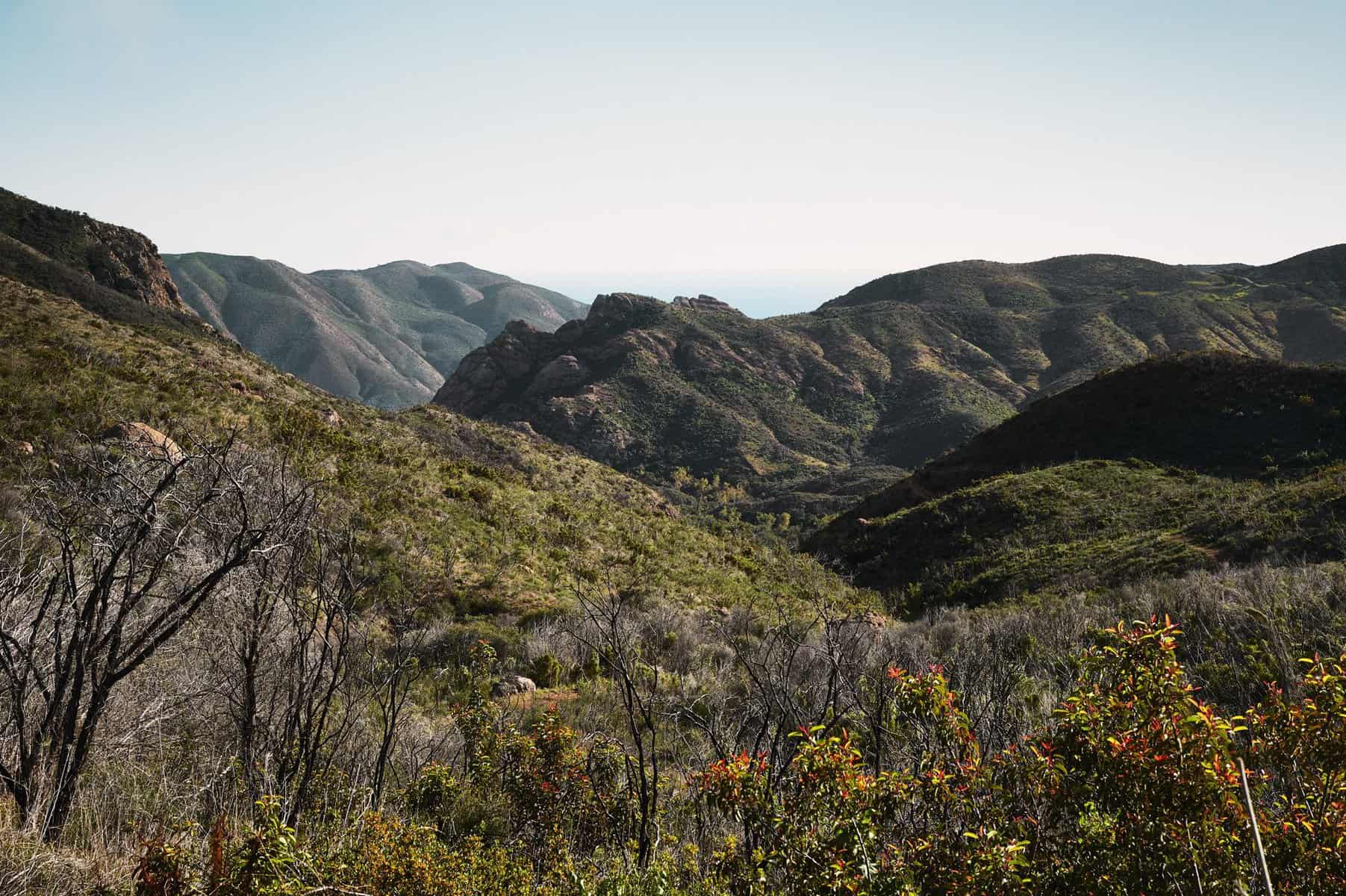Photography has a unique power to communicate and, whether photography is a part of your profession, or you just enjoy the pleasure of taking photographs, we are all in a position to use our images to tell meaningful and inspiring stories. Vocalising what you’re experiencing in the world around you and presenting it visually can have a significant impact on the way we connect to and understand the world around us.
In a new initiative with Nikon, our founders, and established photographers and documentary filmmakers, Fay and Matt Doyle will be sharing how they research, approach and capture their subjects. They’ll also be sharing their strategies for how you can channel your creativity to produce captivating and engaging stories around environmental issues and use your images and creative voice for positive change.
Be sure to also check out the film on tea:tv that dives deeper into Fay and Matts creative process: STREAM NOW: tea:tv USING YOUR CREATIVE VOICE FOR CHANGE
The way we see and experience the world around us is unique to each of us. Two people can interpret the same thing in very different ways and our past experiences, knowledge and, indeed, prejudices all feed into shaping our understanding of a thing. This, in turn, absolutely feeds into the way we talk about or choose to portray that thing. Impartiality is often viewed as a very important trait in storytelling – especially in journalism – but we often wonder if this is ever truly possible? Can you fully separate the story from the storyteller? Far from being a problem, though, we believe that this personal perspective is precisely what gives photography its power: The common thread that links the hardest-hitting photo journalism and reportage to engagement portraits and studio still life is that the photographer – the creative behind the lens – is channelling their vision, their experience into the final image.
Ancestral Micqanaqa’n lands. Image description: A landscape image. Jagged mountains make up the frame. Covered in brown and green moss and scrub. In the foreground are burnt out trees with bright green regrowth. The sky is blue with few clouds.
You Protect What You Love
We can take this one step further: We all have things we care about or are interested in, and we think that these interests or passions make a perfect starting point for a photography project that might interest us – whether professionally, in terms of content creation or commissions or just for the pure joy of things. For us, we spend a lot of time in nature and have come to care greatly about its conservation. It’s logical, then, for this to feed into much of the work we create and it’s fair to say that this approach underpins all of the images we produce.
The environment is an obvious subject for us. Nature and the outdoors form the backdrop of our work and even when we’re not working, we hike for fun too! As we’ve spent more time in nature, we’ve become acutely aware of how fragile it is – ironically, some of the environments that are outwardly the harshest and least conducive to human survival are actually the most delicate and finely-balanced ecosystems that stand to suffer the most from climate change. Beyond climate change, we’ve witnessed first-hand the impact of pollution, human encroachment and over tourism on many areas.
Looking specifically at environmental storytelling, we’ve come to realise that it’s all too easy to fall into a trap of doom-saying and negativity. This is easily done. When faced with the existential crisis that is climate change or environment breakdown triggered by pollution it’s difficult – almost impossible really – to see any positives. However, we have found that just presenting people with bad news is a sure-fire way for them to disengage with the content you are presenting. With this in mind, we always try to present a positive side to the story too. This isn’t to say we’re trying to dodge the reality of a situation, rather we’re trying to present a more balanced and engaging view instead.
Ancestral Micqanaqa’n lands. Image description: A landscape image. Jagged mountains make up the frame. Covered in brown and green moss and scrub. In the foreground are burnt out trees with bright green regrowth. The sky is blue with few clouds. A path cuts through the centre of the frame and Matt walks along. He is wearing red trousers, black top, yellow shoes. He carries a tripod and a camera in his hand.
Finding this positive angle can be tricky – especially if you’re dealing with a subject like environment breakdown – but making this a ‘condition’ of the stories we tell has, we believe, made us better at what we do. It’s forced us to question our decisions more thoroughly and, in many cases, to do more in-depth research on projects.
The images illustrating this article we produced around the Santa Monica Mountains and Malibu, just north of Los Angeles in California. This is an area we’ve visited many times before. Prolonged drought conditions – exacerbated by human-made climate change – have meant this area has been ravaged by wildfires in recent years. We are surely all aware of the massive environmental and human tragedies that have struck this area as the term ‘wildfire season’ has entered into our collective vocabularies. However, nature has a way of bouncing back and we were keen to see how an area that had burned during 2018’s Woolsey fire had recovered. We found lush new plant growth surrounding burned tree trunks – a surreal sight for sure! Long after the news crews had left the area behind, we were pleased to see regrowth and an ecosystem that wasn’t permanently destroyed.
We produced these images in a location that perhaps many of our readers will never get to visit, but compelling storytelling does not need an exotic location. There are stories all around us – even in seemingly familiar or mundane places. Starting with your likes and passions is a great way to start identifying stories: What do you love? What interests you? Many photographers we meet say they struggle to find inspiration for stories, but we’ve found that if you start with a subject that already lights you up, then finding the ideas that can develop into a small picture series or full-blown, long-term project becomes relatively easy. The environment is a logical subject for anyone who spends time outdoors, but within this, you can drill down and get specific as little or as much as you want – we think that finding a subject that engages you, the creator, no matter how specific or broad it may be, is the best starting point for creative work.
Action points:
- What do you care about and what story can you tell about it?
- Is there a new angle you can take, from your personal viewpoint that hasn’t been explored before?
- Can you find inspiration in niche interests? Can your inspiration come from unlikely sources?
Ancestral Micqanaqa’n lands. Image description: A landscape image. Matt stands in the centre of the frame holding a camera up to the sky. In the background at hip level are rugged green and brown mountains. The sky is blue with white clouds.
Ancestral Micqanaqa’n lands. Image description: A landscape image. A close up detail of burnt tree bark with new green leafy growth which creates a contrasting colour.
Equipment and Why it Matters
If you’ve ever studied photography, taken part in any kind of photography class or workshop or even just read a few online forums, you’ve likely heard that your equipment doesn’t matter. We don’t think that’s strictly true. Sure, the latest and greatest camera body and a bag full of lenses will not come up with ideas or take the photos for you, but, by the same token, if you want to start taking your photography seriously or produce an image series, then even the most basic system camera will provide substantially more creative control and better outright image quality than even the highest end smartphone camera. It’s true that there’s a learning curve that comes with making a step to better camera equipment, especially so if you want to learn to use the camera in manual exposure mode, but a small investment of time and a little bit of testing really do pay off and eliminate compromises caused by more limiting gear.
Nikon equipment has formed the backbone of our kit for over twenty years. Matt was shooting 35mm film in an all-manual FM2n in 2000 and Fay’s first serious digital camera in the early 2000’s was a D50. From these beginnings, we’ve gone on to use several generations of Nikon DSLRs and build an extensive collection of Nikon lenses and accessories including several items outside of their mainstream camera systems – such as a Nikonos V underwater film camera and an LS-9000 film scanner. Today, we use Nikon’s Z mirrorless system for much of our work. Nikon systems now form most of the our production companies’ equipment.
Ancestral Micqanaqa’n lands. Image description: A landscape image. Jagged mountains make up the frame. Covered in brown and green moss and scrub. In the foreground are burnt out trees with bright green regrowth. The sky is blue with few clouds. In the foreground, black burnt out trees frame the scene with bright green regrowth creating contrast against the blackened branches.
There’s good reason for us sticking with Nikon for so long: We often produce our work in harsh environments and less than ideal conditions. We might find ourselves operating cameras whilst wearing thick gloves and goggles, in weather conditions or landscapes that make tripod use impractical. None the less, we still seek to achieve the highest possible image quality we can under these circumstances. However, pure image quality is not the only trait we value in our cameras: we require responsiveness, accuracy, and durability too. Our equipment doesn’t always have the easiest life and we’ve come to appreciate the sensible design, ergonomics, massive range of lenses and accessories and general durability and reliability of our Nikon gear. It might seem like a cliché to say this, but we consider our camera gear to be our tools and Nikon make the best tools for the kind of jobs we do.
As already mentioned, we are using Nikon’s Z Mirrorless system for most of our work now: having used SLR cameras our entire careers and remembering other manufacturer’s early attempts at electronic viewfinders, we were initially quite sceptical of mirrorless cameras. However, once we started working with them, the benefits they brought to the table were very clear. We’ve also been particularly impressed by the Z series lenses – especially so the S Line lenses. These are simply stunning and probably the best lenses in terms of image quality we’ve ever used.
Image quality comes down to much more than just raw resolution numbers in a file. There’s a whole list of other qualities that play into the equation too – some, like dynamic range, sharpness or noise can be measured, quantified and directly compared to results from other cameras, but there are also other less tangible factors that are more difficult to pin down let alone try to measure: a certain ‘feel’ to the files a camera produces that’s perhaps a combination of in-camera processing, colour science and likely many more factors too. We like the files Nikon cameras deliver. To us, they ‘feel’ right. We would never present a file straight out of camera and sometimes our images are very heavily post processed, but we do feel that Nikon raw files give us the right starting point, the right degree of adjustability – ‘malleability’ is perhaps a better word here – on which to build our final images.
Action points:
- Could improving or updating your equipment help you to produce better and more impactful work?
- Can you identify any shortfalls in you existing equipment that upgrades could address?
Ancestral Micqanaqa’n lands. Image description: A landscape image. Jagged mountains make up the frame. Covered in brown and green moss and scrub. In the foreground are burnt out trees with bright green regrowth. The sky is blue with few clouds. A path cuts through the centre of the frame and Fay walks along with back to the camera Fay is wearing black trousers, blue top, yellow backpack and is using hiking poles.
The (un)Importance ofReferences
Referencing and research plays a vital role in any photographic project. If you’re going to be visiting somewhere to take photographs, it’s likely because you’ve seen a picture of it somewhere else before. We will almost always check social media for recently tagged images of a place before we visit. This is a great way to get a sense of conditions on the ground: We can use these to accurately visualise weather conditions, the state of foliage, how trails look and so on. Referencing like this also gives us to chance to see how other people have photographed the place and gives us pointers for some of the images we might like to capture ourselves. Finally, if we’re planning a repeat visit to a place we’ll check back through our archive to see how we previously photographed it – to see if there are any specific images we want to revisit or reinterpret.
References are important. Used correctly they let you go into a shooting day better prepared. But just as important is not to let the references dictate the shoot to you. References are there to inspire and not just to copy – it may seem obvious, but we regularly meet other photographers whilst shooting who are unhappy because they aren’t able to photograph a place in exactly the same way or light as they’ve seen online. We think this is a great shame. The beauty of working outdoors is that no two moments are ever exactly the same and we think that often the most visually interesting images come from working with the conditions you’re presented with rather than trying to match an unachievable reference.
Action points:
- How can references help you in your planning?
- How can you ensure that you don’t become over reliant on references?
Ancestral Micqanaqa’n lands. Image description: A close up detail of jutted mountain peaks. In the foreground, green growth slopes down to the left of the frame. This is very vibrant – nearly fluorescent. The mountain peaks in the mid of the frame present interesting textures and present various colours of grey and pink as well as red. In the background, hazy peaks make up the back of the scene with green moss covering them.
Finding Your Style
Finding your photographic style is a massive topic and perhaps something that’s better off not being coached too heavily. It’s an intensely personal journey that can lead to changing outcomes over time. Your style can and should encompass your equipment preferences and your preferred method of using this equipment. Over time, as we have produced more and more work, we’ve been able to identify the kind of images we like along with the kind of equipment we need to produce them.
We don’t, for instance, make much use of ultra wide angle lenses, in our work. Instead, we prefer long focal lengths that allow us to isolate details. Much of our work is produced hand-held, often using zoom lenses. We prefer to work this way as it gives us more flexibility in terms of working around our chosen subjects. In many respects, this is the exact opposite of how many people assume photographers shooting in the outdoors should work – there’s an image of a landscape photographer working with a heavy tripod and prime lenses.
Our shooting style is not something we consciously decided on, rather it’s the product of years of shooting and image editing experience. It’s a ‘formula’ we arrived at that allows us to efficiently produce the sort of images that work for us. As with any working method, there are compromises involved – for example, we probably sacrifice some absolute image quality by not using a tripod for all of our work, but in exchange, we gain mobility and flexibility. For us, that trade off is acceptable.
Ancestral Micqanaqa’n lands. Image description: A landscape image. A close up image showing burnt out branches which are black with contrasting green regrowth, creating contrast.
All that said, we do still carry a tripod (and ND grad filters) with us most of the time. They may not get used at all on a shoot day, but sometimes they are essential.
Our working style absolutely informs our equipment choices and visa versa. Nikon’s stabilised (VR) lenses along with the incredible low light performance of modern digital cameras were a major factor in us being able to ditch our tripods for more and more images. This has continued as we’ve switched to mirrorless shooting: All of the full frame Z cameras have in-body stabilisation, so, essentially, every lens can now have VR. Eliminating the mirror box also means less vibration at the moment of exposure. Essentially, these factors mean we can use our mirrorless cameras hand-held and get consistently good results in situations where this would have been impossible with our DSLRs.
We use our equipment in fully manual exposure mode and often times the exposures we make are not what would be considered ‘correct’: our aim is always to capture the feel of a place and sometimes that might mean deliberately under or over-exposing a scene. With the Z series mirrorless cameras, we can preview our exposure settings in real time: looking through the EVF, we can see how, for instance, adjusting our exposure settings can emphasise or de-emphasise shadows, pop highlights and so forth. This wasn’t impossible with DSLRs – you could use live view or just review your images after each shot, but with mirrorless, the process becomes more fluid and means we can spend more time concentrating on making the images. For us, this is another key advantage of mirrorless over SLR cameras.
Ancestral Micqanaqa’n lands. Image description: A landscape image. Jagged mountains make up the frame. Covered in brown and green moss and scrub. In the foreground are burnt out trees with bright green regrowth. The sky is blue with few clouds. In the foreground, black burnt out trees frame the scene with bright green regrowth creating contrast against the blackened branches.
Finding your own working style is a very personal journey. Your equipment – and not just what equipment you use but also how you choose to use it – your taste in images and how you want to interact with your subject will all feed into it. Our method is right for us at this moment, but it’s constantly evolving and perhaps in the future the way we work will look very different to how we work now. We wouldn’t be so presumptuous to say that our way of working right for everyone else, but if you are struggling to find your own style, it’s worth experimenting with different approaches to the same subject: look at how other people work, try out their methods and see what works for you. Don’t be afraid to borrow, but as with references, don’t get fixated on copying. Above all else, we’d recommend that you don’t get too caught up in the way other people – especially online pundits – say you should be shooting. Your photography is your own and the beauty of it is that your working style should be unique to you too!
Action points:
- What can you learn about your shooting style from your past work and what sort of compositions and types of images do you prefer?
- Are you open to the way you work changing over time?
- What inspiration can you take from other photographers work to inform your style?
Tying it All Together: From shoot to edit to finishing
All of the above elements need to be brought together for your photo story to come to life. Once again, planning is key. Our projects are always accompanied by a brief, that is, a list of what we want to create and how we want to show it. This doesn’t have to be a formal shot list – it can simply be a mental note – but regardless of the form it takes, we find it very helpful to go into a project with an idea – even a vague idea – of how you want the finished images to look… or perhaps more usefully, what you want them to communicate!
It’s easy to fall into the trap of shooting the project in your head before you’ve even reached your location. This can be problematic. Just as an over-reliance on copying references will invariably leave you feeling disappointed by your own work, we think it’s more useful to pre-visualise projects in more conceptual terms so that rather than trying to create specific images, you are instead aiming to create a certain type of image. That distinction may seem pedantic, but when it comes to actual shooting it makes all the difference: it allows you to disconnect your creativity from predefined ideas of how your images should look. It allows you to be more responsive to your environment to and to take advantage of locations and opportunities to make pictures that you may otherwise have ignored if you were single-mindedly concentrating of shooting images that look a specific way. Put simply, it allows for more flexibility and this, we’ve found, is often where the best images come from: when you’re presented with something truly surprising in a scene and you can take advantage of it to capture a truly memorable image.
Ancestral Micqanaqa’n lands. Image description: A landscape image. A setting sun landscape is shown in a desert and leafy area. There is evidence of wildfire damage. The shot is largely in shadow, with certain areas being picked up and highlighted by the golden light.
Editing your images is also a key part of telling your chosen story. If you’ve worked to a brief – no matter how tenuous it may have been – you’ll find that your story will not be missing key elements when you sit down to make your image selection.
Post-production should also play a key role in your image making process: this isn’t to say that all of your images need to look post-produced! As with your working style, decisions here are intensely personal. You may favour muted colour over high saturation, you might value absolute sharpness over softer transitions. None of these choices is inherently right or wrong. They are just different. One of the key differences between, say, your smartphone camera and something more advanced like a Nikon Z mirrorless camera is that the Z can produce files that are the start of a whole new journey. If you’re shooting raw files – and you should whenever you can – then the capture is just a starting point. Sure, you can adjust the images your phone shoots, but the range and flexibility just isn’t there relative to a raw file from a more advanced camera.
Post-production is a great opportunity to further make your images your own. Our images are often very highly post produced, but we do not create elements from scratch in our images. We’ve seen countless tutorials showing how you can re-light your landscapes – turning a scene not something it wasn’t. We don’t like this approach. Instead, we see post-production as an opportunity to shape a raw file into something that’s closer to how we remembered or experienced a place. We aim to bridge the gap between memory and representation. It sounds like a lofty goal when it’s written down like that, but in essence, we just want our images to look as good as they can whilst still being true to the original scene.
Ancestral Micqanaqa’n lands. Image description: A landscape image. Jagged mountains make up the frame. Covered in brown and green moss and scrub. In the foreground are burnt out trees with bright green regrowth. The sky is blue with few clouds. In the foreground, black burnt out trees frame the scene with bright green regrowth creating contrast against the blackened branches.
Action points:
- How can you work with self-set briefs? How do they need to be presented and what level of detail do they need in order to be of most benefit to you?
- Can you critically edit your own work and are you prepared to reject images if they don’t fit the brief, even if they are otherwise great images?
- Are there any areas for improvement in your post-production? How can you use post-production as a tool to improve the way your image communicate?
Closing Thoughts
Photography is an immensely personal journey. At every step of the process, from selecting your subject, deciding how to photograph it, to editing your final selection there are countess opportunities to stamp your identity on your work. It can be intimidating for sure, but we also think it’s what makes photography exciting, engaging and so much fun! We met a person once who spoke to us a great length about all the money they’d spent on a camera, lenses and accessories. At some point we used the word ‘Photographer’ to them. They countered: ‘No, I’m not a photographer. I never know what to shoot. I’m just a camera owner.’ Sadly, we think this attitude is all too common, but we believe that by deconstructing the creative process, starting with what we love, we can all use our creative voices for good. As we said at the start, photography has a unique potential to communicate. If we can harness this through our creative process then we can all be not just photographers but also storytellers too.



